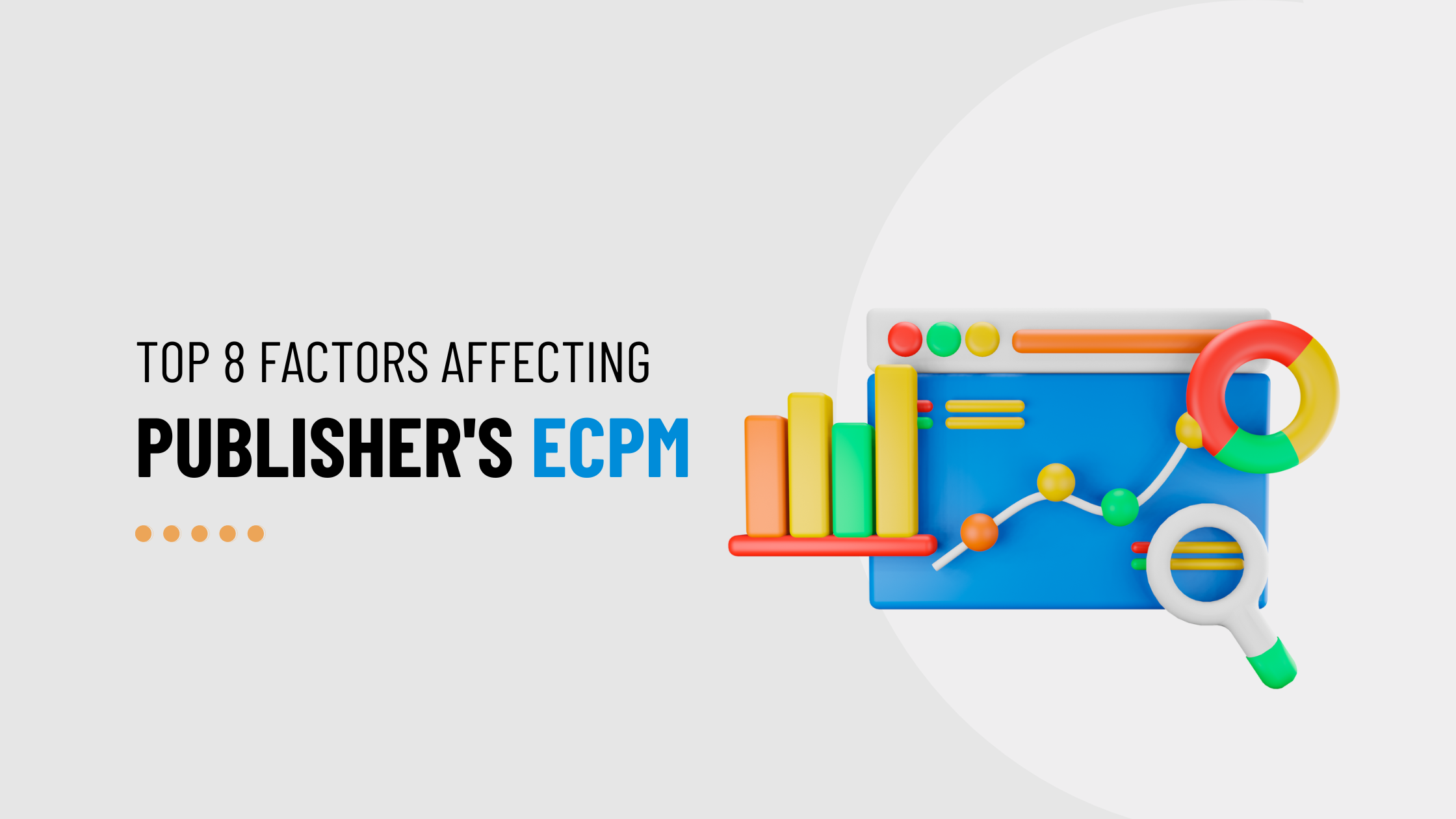Top 8 Factors Affecting Publisher’s eCPM

The revenue a publisher makes gets determined by a variety of factors. Some of these characteristics are under the publisher’s control, while others depend on the traffic.
The term “effective cost per mille” refers to how much an advertiser spends for ad space per 1,000 ad impressions. One of the most crucial KPIs is eCPM, which indicates how bankable various ad spots, applications, and other aspects are. eCPM is affected by several variables, and further adjusting these variables can yield the best outcomes. With a thorough grasp of eCPM, publishers may improve their monetization tactics and generate more income.
Factors Influencing eCPMs:
When considering scale, even a tiny increase in eCPM can impact significantly. Increasing eCPMs influence over time, therefore optimizing the monetization approach is worthwhile. Here are the factors that affect eCPMs:
- Viewability
- Ad Placement
- Fill Rates
- User Device Type
- User Location
- User Performance
- Visitor Uniqueness
- Time
Advertisers want to ensure that their advertisements are getting seen. They will pay more for high-quality apps with high viewability rates. The viewability of an ad gets partially determined by engaged users, who are more willing to sit through an ad. Another part of the solution is ensuring there are no technical glitches with the app, such as latency or poor ad space layout.
Ad placement significantly impacts the number and quality of views received by an ad. In general, ads above the break on a web page will attract more clicks and produce more income than those below the fold.
The percentage of ad units that show an ad when there is an opportunity. The more an ad gets presented to a user, the higher your eCPM. Optimal fill rates (100%) significantly impact eCPMs, increasing revenue.
The user’s device type directly influences advertising performance. Ads displayed on mobile devices often have a higher CPM owing to increased engagement and conversion.
Some advertisers provide products and services that are location-dependent. Consequently, they only want their advertisements to be visible to people in certain areas. Traffic location determines which ads are presented to the traffic, affecting the overall eCPM.
A publisher does not have control over traffic performance. However, traffic actions on other platforms will have a significant and demonstrable influence on eCPM. Examining ad performance and determining what ‘quality traffic’ looks like for advertising is critical in increasing eCPM.
The number of repeat (unique) visits v. returning visitors affects ad performance. Because unique visitors are more valuable than recurring visitors, they fetch a higher CPM.
eCPM, like other advertising and marketing efforts, is susceptible to seasonal fluctuations. CPM will be affected by the time of year, consumer behaviour, and other global influences. As a result, it is critical to investigate similar data periods rather than just week-on-week or month-on-month comparisons.
How AdPumb is the solution you’re looking for.
Instead of employing many single ad networks for app monetization, every app publisher obtains enhanced results when incorporating an ad mediation platform into their app. While an ad network links publishers and advertisers, an ad mediation platform connects publishers with numerous ad networks, each of which has a large number of advertisers. The appropriate network mix improves performance and, as a result, revenue. With tried and tested techniques – fill rate management, eCPM optimization, supply load balancing, etc, enhance your eCPMs.
